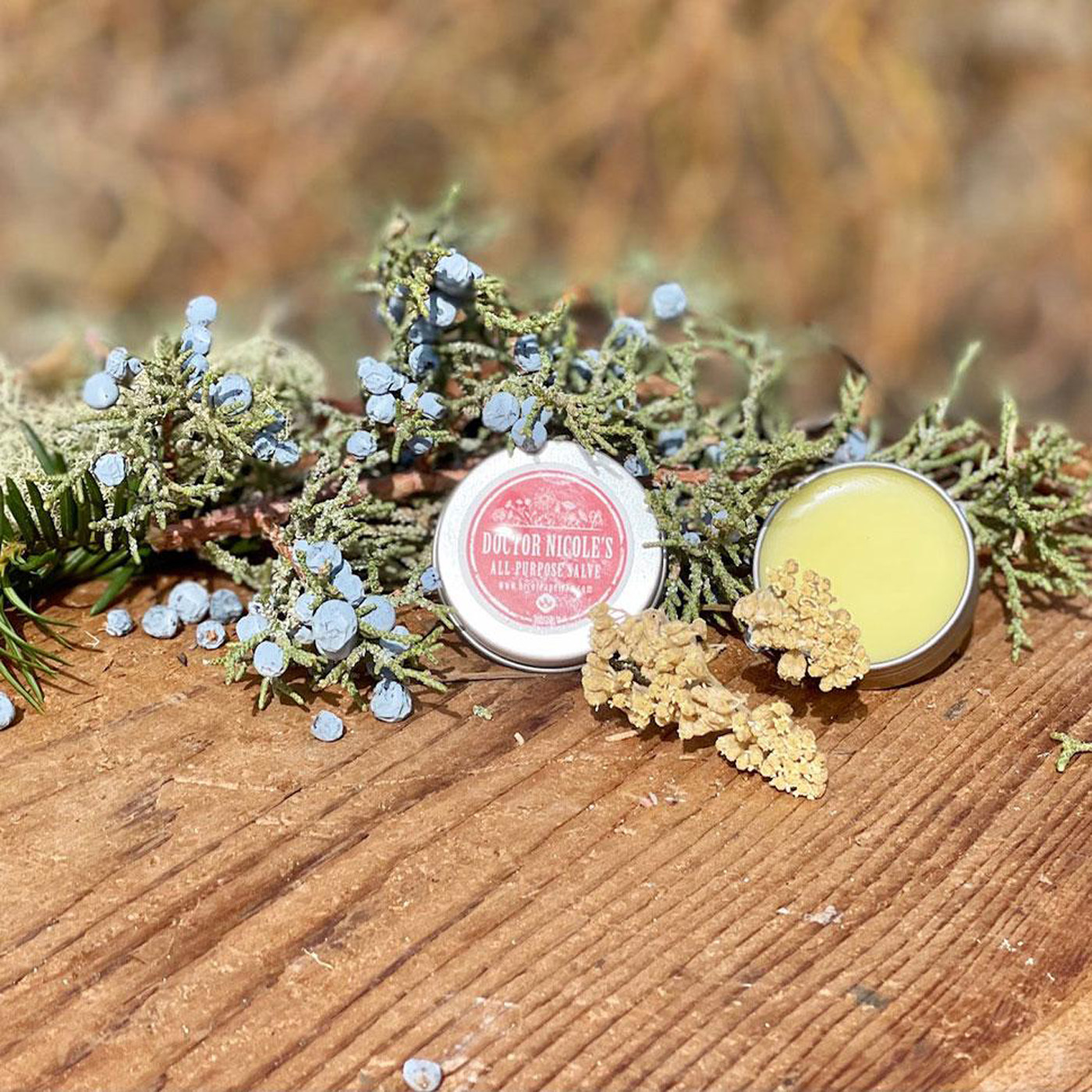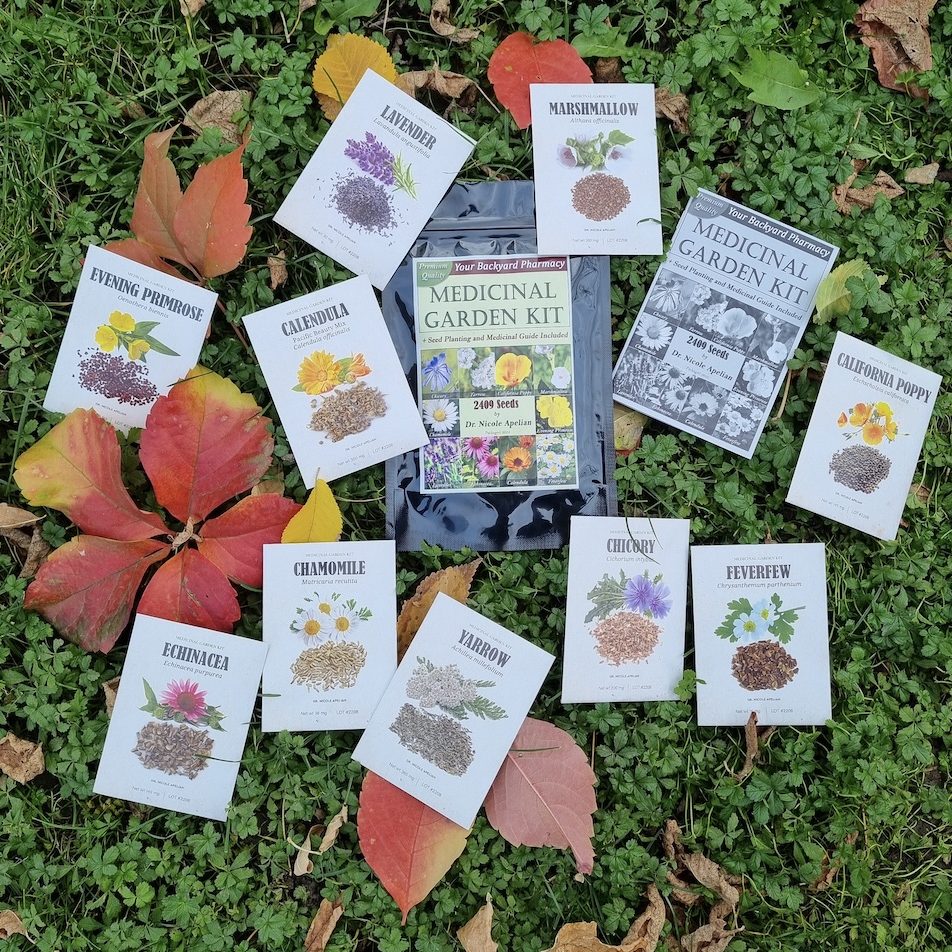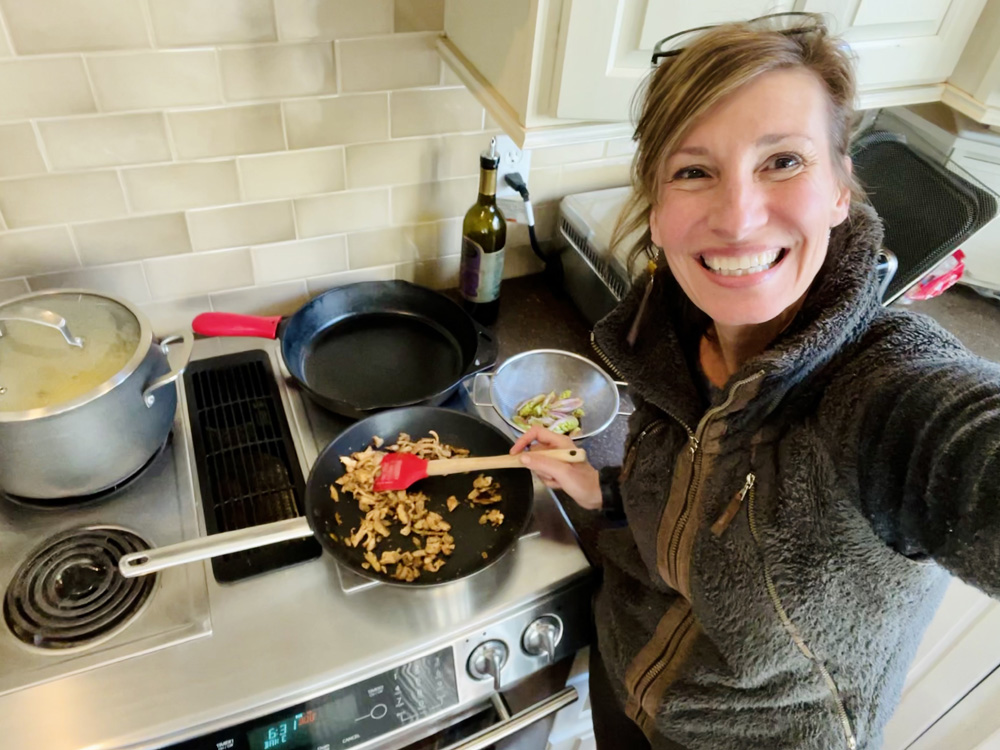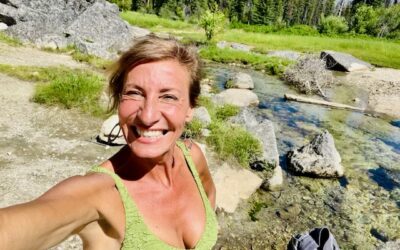Working With Nature to Create a Bountiful Harvest
Made famous by the documentary film “Back to Eden”, no-till gardening is modeled after nature. Some know it as permaculture, others as “lasagna gardening”. Whichever name you use, this is a fully organic method without the use of synthetic pesticides, fertilizers, herbicides, or genetically modified organisms (GMOs). The key to no-till is utilizing compost and cover cropping to improve soil quality, sequester carbon, reduce erosion, and suppress weeds. As the name implies, there is no digging involved. In fact, you want to disturb the soil as little as possible. And did I mention it is one of the easiest forms of gardening? Since it works with nature, instead of against it, much of the work is done for you. Let’s dig into the basics of establishing a no-till garden and how it can revolutionize the way you grow food and herbal medicines.

No-Till Gardening 101
The beauty of this way of gardening is that it is exceptionally simple to establish. No more strained backs or constant battles with weeds. Poor soil is efficiently revitalized. Plants thrive in their naturally enriched soil while resisting disease and pests. Not to mention no-till is better for the environment as it doesn’t use toxic chemicals or fertilizers. It also reduces greenhouse gas emissions and helps to trap more carbon into the soil. The best part? Nature does most of the work. If this has peaked your interest and you would like to explore this type of gardening for yourself, here are a few tips to get you started:
Prepare new beds in the autumn. Choose a spot that will get plenty of sun — aim for at least 8 hours during the summertime. Clear the surface of the soil of any rocks or debris, then mow grass and weeds close to the ground if needed. Make your beds 4 feet wide or less as this will help you to avoid stepping on the soil and compacting it. You want to be able to reach any spot of the bed from the path. When first establishing a bed, I like to lay down a layer or two of cardboard or a thick layer of newspaper as this will not only help to suppress weeds, but will eventually build organic matter into the soil. Next, add 6 inches or more of aged manure or compost.
The importance of mulch. This is one of the most crucial aspects of no-till gardening as it will build the soil, slow water evaporation, and help encourage earthworms and healthy microbes that will nourish the plants. Your mulch can be leaves, saw dust, grass clippings, wood chips, or straw — cover your bed with it up to ten inches thick. Do not mix the layers.
“The crux of no-till gardening is to pile on enough mulch so that weeds don’t germinate and grow up through it,” said Barb Fick, a horticulturist with the Oregon State University Extension Service. Whatever you use, don’t skimp on mulch. A heavy layer not only keeps weeds from growing, it also keeps the underlying soil moist, greatly reducing the amount of watering you need in the summer.”1
And remember to mulch the walkways in between the beds to keep weeds down. Wood chips are excellent for this purpose. Alternatively, you can use several inches thick of straw.
Springtime planting. When warmer weather rolls around and you are ready to transplant your established seedlings or plants, you can cover your beds with heavy-duty black or red garden plastic beforehand. It will help to suppress weeds, conserve moisture, and warm up the soil faster. Simply cut a cross shaped opening, push aside the mulch, and dig a hole for the plant. If using soaker hoses, situate them under the plastic. Secure the plastic along the edges with garden pegs for this purpose so that it does not catch the wind. If you would like to sow your seeds directly into the soil, skip the plastic and push aside the mulch away from where you would like to plant.
Wrapping up the growing season. Once the growing season is finished, remove the plastic (if used), and incorporate the dead vegetation into the mulch, then add another layer — up to six inches — of new mulch. This will continue to build the soil over the winter and keep the soil healthy. Think of it as mimicking the process of building a forest floor over time.

Growing Your Own Backyard Pharmacy
Along with growing fruits and vegetables in your no-till beds, don’t forget to save space for your medicinal herb garden. Even in the best of times, I always recommend self-sufficiency and preparedness as much as possible. And one of the best ways to do this is to grow your own natural medicines. Knowing that a bounty of medicinal herbs is growing just a few steps outside your door will give you much needed peace of mind.
This is why I created a Medicinal Seed Garden Kit. The herbs can be harvested and used fresh or dried for later use. They can also be made into tinctures, salves, oil infusions and more. Personally, summertime is busy with tincture making in my house as the finished extracts will stock my herbal medicine chest and last for up to five years! Here are my favorite, easy-to-grow herbs that are included in the kit:
Yarrow: Stops internal and external bleeding, swelling, varicose veins, toothaches, burns, cuts, bruises, insect bites, menstrual cramps, heartburn, and digestive upset. It is also antibacterial and can be used for sprains, dental pain, fevers, colds, and the measles. Yarrow is such a powerful herb that I include it in my All-Purpose (First Aid) Salve.
Chicory: Pain relief, improved digestion, adrenal fatigue, sinus health, anti-fungal, and liver protecting.
California Poppy: Sleep, stress-relief, PTSD, insomnia, analgesic.
Marshmallow: Gut inflammation, stomach ulcers, Crohn’s disease, antibacterial, irritable bowel syndrome, constipation, indigestion, heartburn.
Chamomile: Sciatica, rheumatic pain, eczema, hemorrhoids, irritated eyes, upset stomach, sore muscles and joints, wounds, nervous tension.
Evening Primrose: Skin health, bruises, digestive upset, mood swings, coughs, sore throat, rashes, hormonal imbalance, nerve pain.
Lavender: Anxiety, depression, hair loss, insomnia, fungal infections, acne, dry skin, psoriasis, cracked skin, insect repellant, calming.
Echinacea: Immune stimulating, antiseptic, inflammation, aches and pains, antimicrobial.
Calendula: Cleanses the lymphatic system, wounds, scars, rashes, sore throat, mouth ulcers, burns, irritated eyes and stomach, skin ulcers, eczema, anti-inflammatory.
Feverfew: Migraines, headaches, anti-inflammatory, painful joints, neuropathy, insect repellant, eczema, rosacea, acne, bruised skin.
Even if you’ve never had a garden before, you’ll have no trouble growing the plants in this kit.
The seeds are open pollinated, non-GMO, heirloom, and grown/packaged in the USA. Detailed instructions for planting, growing, and harvesting are included. You will also receive a guide that shows you how to turn your medicinal plants into tinctures, ointments, salves, poultices, decoctions, infusions, and essential oils.
If you live in the USA, this kit is for you. Tap here to learn more!
Nicole Apelian
Products in this Post
References
- “Mulch is a key to no-till gardens”, Tiffany Woods, Oregon State University. Retrieved on February 7, 2022, from https://extension.oregonstate.edu/news/mulch-key-no-till-gardens






